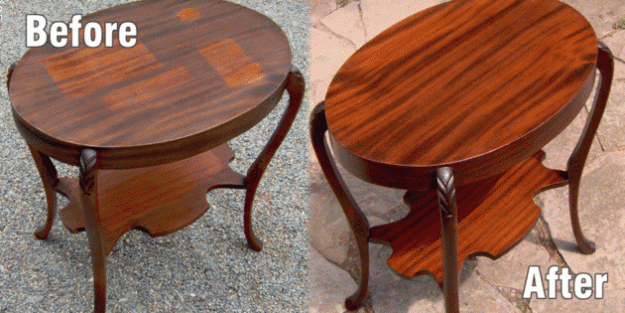Art Bounty
Discover the vibrant world of art and creativity.
Transforming Trash into Treasure: Furniture Restoration at Its Finest
Unlock the secrets of stunning furniture restoration! Discover how to transform trash into treasure and elevate your home decor today!
10 Essential Tips for Successful Furniture Restoration
Furniture restoration can breathe new life into old pieces, making them functional and aesthetically pleasing again. Here are 10 essential tips for successful furniture restoration:
- Assess the condition of the furniture: Before diving into restoration, take a close look at the piece to determine what needs to be repaired, replaced, or refinished.
- Gather necessary tools: Ensure you have all the right tools on hand, including sandpaper, wood glue, and finishing products.
- Choose the right finish: Selecting a suitable finish, whether it’s paint or stain, can significantly affect the final look of your restored furniture.
When undertaking any restoration project, patience is key. Successful furniture restoration often requires multiple steps and attentive care. Consider these additional tips:
- Follow safety precautions: Always wear protective gear such as gloves and masks when dealing with chemicals or sharp tools.
- Preserve original details: If your furniture has unique characteristics or markings, try to keep them intact during the process.
- Test products on hidden areas: Before applying any paint or finish, test it on a less visible section to see how it reacts with the material.

The Benefits of Upcycling: Turning Old Furniture into Stylish Pieces
Upcycling has become a popular trend among DIY enthusiasts and eco-conscious individuals alike. By turning old furniture into stylish pieces, you not only breathe new life into discarded items but also contribute to reducing waste. The process of upcycling encourages creativity and innovation, allowing you to customize your furniture to better reflect your personal style. Whether you choose to repaint a worn-out chair, reupholster a vintage sofa, or refinish an old table, each transformation results in a unique piece that serves as a conversation starter in your home.
Another significant benefit of upcycling is the economic advantage it offers. Instead of investing in expensive, brand-new furniture, upcycling allows you to save money while achieving high-quality results. Additionally, by using materials you already own or sourcing items from thrift stores and garage sales, you can create distinctive furnishings without breaking the bank. In summary, upcycling old furniture not only enhances your living space with its personalized charm, but it also promotes a sustainable lifestyle and supports your budget.
How to Choose the Right Techniques for Your Furniture Restoration Project
Choosing the right techniques for your furniture restoration project can significantly impact the final outcome. First, assess the condition of your furniture and identify whether it requires simple cleaning, minor repairs, or a complete overhaul. For instance, if your piece only has scratches, using a quality wood polish might suffice. However, if it has structural damage, you might need to reinforce joints or even replace parts. Understanding the extent of damage is crucial in deciding which restoration techniques will yield the best results.
Next, consider the type of materials involved in your furniture restoration project. Different materials, such as hardwood, upholstered fabrics, and metals, require specific care and techniques. For instance, when working with wood, you might choose between methods like stripping and refinishing or painting, depending on the desired aesthetic. Similarly, when restoring upholstery, techniques like reupholstering or simply cleaning can be considered. Remember, the right technique not only preserves the integrity of the furniture but also enhances its original charm.